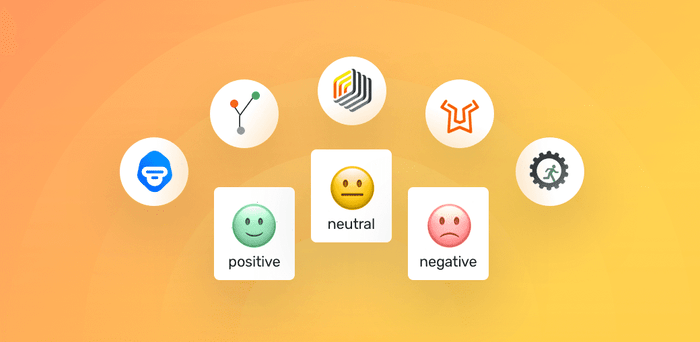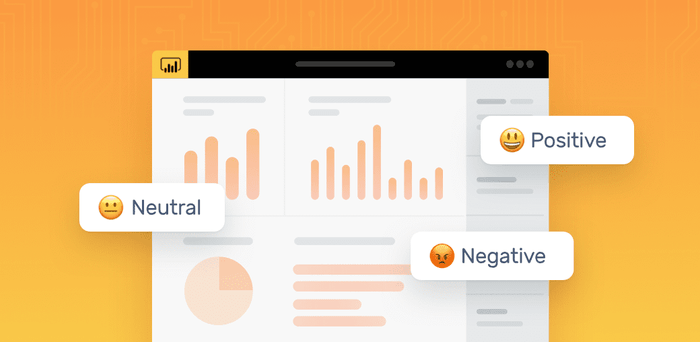In today’s fast-paced digital landscape, understanding the sentiment behind textual data is crucial for businesses, researchers, and individuals alike. Sentiment analysis, also known as opinion mining, is the process of determining and extracting emotions from text data. As businesses strive to enhance customer experiences and researchers delve into public opinions, an array of sophisticated tools have emerged to make sense of this vast sea of textual information. In this article, we will explore the tools used for sentiment analysis, shedding light on the technology that helps us decipher the nuances of human emotions.
Tools Used for Sentiment Analysis: Navigating Emotions in the Digital Age

Understanding Sentiment Analysis: A Brief Overview
Sentiment analysis, a branch of natural language processing, involves categorizing opinions expressed in a piece of text as positive, negative, or neutral. It goes beyond mere text analysis, delving into the realm of human emotions and opinions.
Lexical Analysis Tools
Lexical analysis tools examine the sentiment of a text based on the words used. These tools create dictionaries of words categorized by their sentiment, allowing for quick analysis of textual data.
1. SentiWordNet
SentiWordNet assigns a polarity score to words, indicating their positive, negative, or neutral sentiments. It calculates sentiment based on the word’s meaning, providing a nuanced analysis of textual content.
2. VADER (Valence Aware Dictionary and sentiment Reasoner)
VADER is a pre-built lexicon specifically designed for social media text. It analyzes text sentiment by considering the intensity of words, accounting for both polarity and context, making it particularly useful for analyzing short, informal texts.
Machine Learning-based Tools
Machine learning algorithms have revolutionized sentiment analysis by enabling computers to learn patterns from large datasets. These tools can handle complex language structures and subtle contextual cues.
1. TextBlob
TextBlob is a Python library that simplifies text processing in Python. It provides a consistent API for diving into common natural language processing (NLP) tasks, including part-of-speech tagging, noun phrase extraction, sentiment analysis, and more.
2. AIM Insights
AIM Insights utilizes machine learning techniques to extract entities, concepts, emotions, sentiments, and other essential elements from textual data. Its powerful algorithms allow businesses to gain deep insights into customer sentiments, leading to informed decision-making.
Deep Learning Tools
Deep learning models, such as neural networks, have brought unprecedented accuracy to sentiment analysis tasks, capturing intricate nuances in language and emotions.
1. LSTM Networks
Long Short-Term Memory (LSTM) networks, a type of recurrent neural network (RNN), are adept at capturing long-term dependencies in textual data. They excel in sentiment analysis tasks that require understanding the context of words within a sentence, ensuring accurate sentiment classification.
2. BERT (Bidirectional Encoder Representations from Transformers)
BERT, a transformer-based model, understands the context of words in a sentence by considering the words that come before and after them. This bidirectional approach enhances the model’s understanding of linguistic nuances, making it exceptionally effective in sentiment analysis tasks.
Conclusion
Sentiment analysis tools have evolved significantly, from simple lexical analysis to complex deep learning models. As businesses, researchers, and individuals navigate the vast seas of textual data, these tools serve as guiding stars, illuminating the emotions and opinions embedded in words. By harnessing the power of sentiment analysis, we can gain valuable insights, enabling us to make data-driven decisions and foster meaningful connections in the digital age.
For a firsthand experience of the power of sentiment analysis in revolutionizing your business strategies, request a demo from AIM Technologies today. Understand your customers, enhance your products, and elevate your brand with cutting-edge sentiment analysis tools.
Frequently Asked Questions
What industries benefit most from sentiment analysis?
- Sentiment analysis finds applications in various industries, including marketing, customer service, finance, and healthcare. It helps businesses gauge customer satisfaction, analyze market trends, and monitor brand reputation.
Are there limitations to sentiment analysis tools?
- Yes, sentiment analysis tools might struggle with sarcasm, irony, or highly contextual language. While they offer valuable insights, human interpretation is crucial to understanding the subtleties of emotions in certain contexts.
Can sentiment analysis tools analyze multiple languages?
- Yes, many advanced sentiment analysis tools are multilingual and capable of analyzing text in different languages. However, the accuracy might vary based on the complexity of the language and the tool’s training data.
How can businesses use sentiment analysis to improve customer experiences?
- Businesses can analyze customer feedback, reviews, and social media posts to understand customer sentiments. By identifying patterns, businesses can address concerns, enhance products/services, and tailor their marketing strategies to meet customer expectations effectively.


